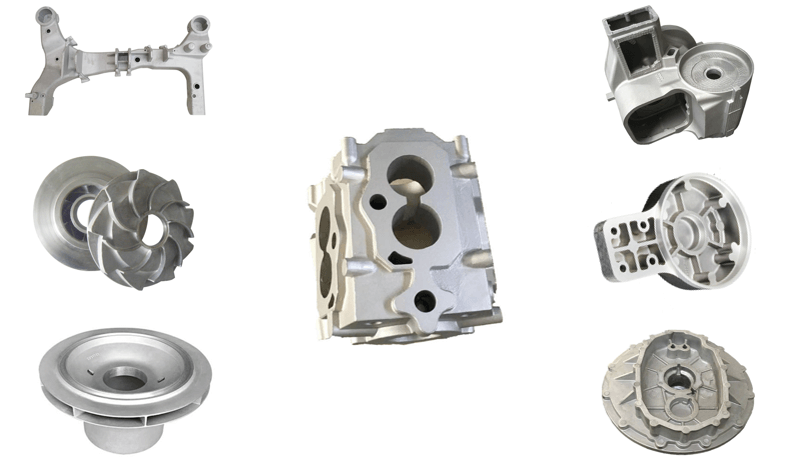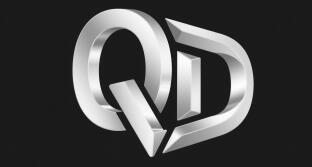Low pressure casting solves the efficiency limitations of gravity casting. It avoids the quality risks of die castings. It also improves the overall quality of aluminum alloy products.
QD has mastered the low pressure casting process. We are experts in casting.

What is Low Pressure Casting?
Low pressure casting is an advanced metal forming process. It is mainly used for non-ferrous metals like aluminum and magnesium alloys.
Principle: A low pressure is applied to the surface of the molten metal in a sealed crucible or holding furnace. This causes the metal to rise steadily through a feed tube and fill the mold cavity.
Low pressure casting combines the simplicity of gravity casting with the efficiency of die casting. It is suitable for producing high-quality castings with complex shapes.
QD uses advanced low pressure casting equipment. This is supported by automated control systems and a team with years of casting experience. We customize process parameters based on your needs to achieve optimal production results.
Process Highlights
Smooth Mold Filling
The molten metal fills the mold steadily from bottom to top, driven by pressure. This effectively prevents turbulence and air entrapment. This filling method reduces oxide inclusions and gas pores. It ensures uniform internal structure of the casting.
Effective Feeding
The pressure acts continuously throughout the solidification process. This helps compensate for metal shrinkage. It reduces shrinkage porosity and cavities. This ensures the casting maintains high density even in critical areas like thick-walled sections.
Controlled Solidification Process
Low-pressure casting allows operators to control the solidification rate by adjusting pressure and temperature. This optimizes the casting’s microstructure. It helps improve mechanical properties and fatigue strength.
High Material Utilization
The process uses precise pressure control, which minimizes splashing and waste. Material utilization can reach over 95%.
| Parameter | Typical Range | Description |
| Pressure Range | 0.01-0.05 MPa | Low pressure level. Ensures smooth mold filling |
| Filling Time | 10-30 seconds | Adjusts based on casting complexity |
| Mold Temperature | 200-300°C | Maintains molten metal fluidity |
| Solidification Control | Programmable pressure curve | Optimizes feeding and microstructure |
Benefits of Low Pressure Casting
Low pressure casting provides multiple advantages for final products. It enhances the market competitiveness of aluminum alloy castings.
High Yield Rate: It significantly reduces internal defects like gas pores and shrinkage porosity. Castings have high density. The yield rate typically exceeds 90%. This lowers rework and scrap costs.
Excellent Mechanical Properties: The castings can undergo heat treatment (e.g., T6) to achieve high strength, hardness, and toughness. This meets demands for high-end applications in automotive and aerospace industries.
Good Surface Quality: Castings have clear contours and a smooth surface finish. They require minimal post-processing, saving time and resources.
High Dimensional Accuracy: Stable mold filling results in minimal dimensional deviation. This suits assembly and integration needs.
Eco-friendly & Energy-saving: The process generates low waste and uses energy efficiently, aligning with sustainable development.
QD utilizes X-ray and ultrasonic inspection for quality assurance. This helps you reduce total ownership cost.
Ideal Application Fields
Low pressure casting is particularly suitable for complex thin-walled aluminum castings that require high pressure tightness, strength, and lightweight properties.

Automotive Components
Examples include wheels, cylinder heads, engine mounts, and transmission housings. These components require high strength and good sealing to withstand high temperatures and pressures.
Aerospace Parts
Such as door frames and structural brackets.
Electronic Housings & Heat Sinks
These applications demand complex geometries with high surface quality and dimensional stability.
Home Appliances & Sports Equipment
Like bicycle frames, which require both good appearance and durability.
Low Pressure Casting vs. Other Methods
| Comparison Item | Low Pressure Casting | Gravity Casting | High Pressure Die Casting |
| Mold Filling Method | Smooth. Fills from bottom to top | Relies on gravity. Prone to turbulence | High-speed injection. Prone to trapping air |
| Pressure Range | Low (0.01-0.05 MPa) | No external pressure | High (10-100 MPa) |
| Casting Density | High | Medium | Varies (often has pores) |
| Surface Quality | Excellent | Average | Excellent |
| Suitable Wall Thickness | Thin to medium | Medium to thick | Thin walls |
| Mold Life | Long | Medium | Short (due to high wear) |
| Cost Effectiveness | High (high yield rate) | Low to medium | High (efficient but has quality risks) |
| Typical Applications | Automotive wheels, cylinder heads | Simple structural parts | Consumer electronics housings |
QD Factory Advantages
In low pressure casting, QD Foundry has years of technical experience and continuous innovation.
Advanced Equipment & Automation
We use imported low pressure casting machines. The process is fully automated. This increases production efficiency.
Expert Process Team
Our engineering team has extensive experience in aluminum alloy casting. They optimize mold designs and process parameters. They solve complex issues.
Comprehensive Quality Control
From raw material inspection to final shipment, we implement multiple checks. These include non-destructive testing and mechanical property tests. This ensures zero-defect delivery.
Customized Services
We provide full solutions from design support to mass production. This helps clients shorten time-to-market.
Environmental Commitment
We practice efficient energy use and scrap recycling. Our processes meet international environmental standards.

Do you have demanding requirements for the quality and density of aluminum alloy castings? Whether you need prototype development or large-scale production, QD can provide reliable solutions. Feel free to inquire about our low-pressure casting capabilities. Let us help you enhance your product competitiveness.
FAQ
1. What materials are suitable for low pressure casting?
It is mainly used for non-ferrous metals like aluminum alloys and magnesium alloys. Aluminum alloys are the most common.
2. Is low pressure casting more expensive than die casting?
Initial equipment investment may be higher. However, the total cost is often lower due to higher yield rates and less material waste.
3. Is the production cycle for low pressure casting long?
The mold filling time is short. But the overall cycle depends on the casting size and complexity. Automated systems improve efficiency. The cycle is manageable for mass production.
4. Can it handle complex part geometries?
Yes. Low pressure casting suits complex thin-walled parts like automotive engine components. The smooth filling process replicates mold details well.
5. How do you ensure casting pressure tightness?
Controlled pressure and feeding effectively reduce internal defects, ensuring high pressure tightness. QD conducts 100% inspection using pressure tightness testers.
